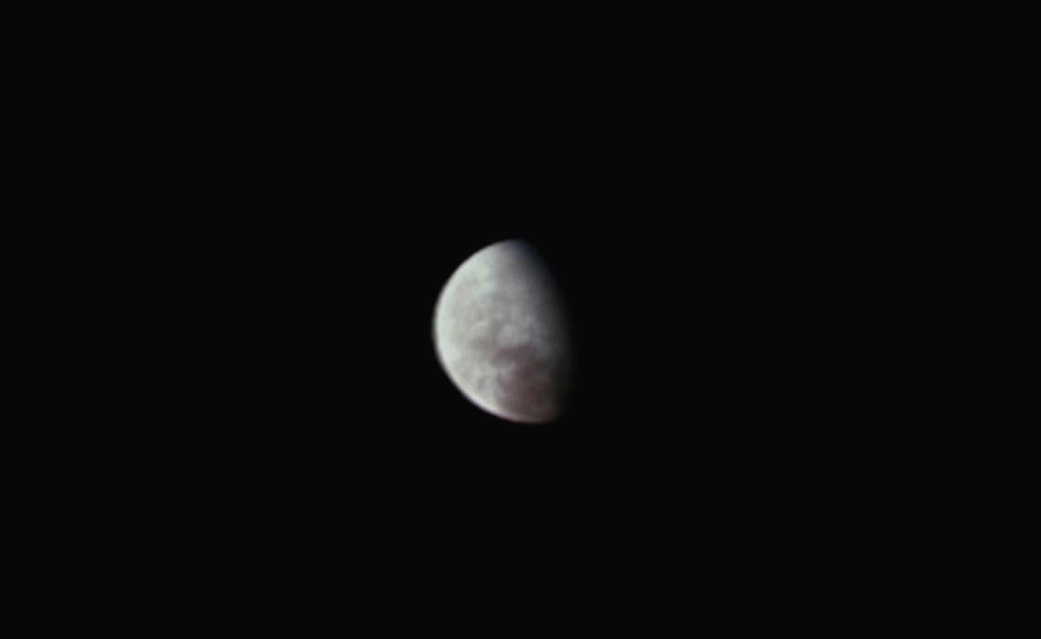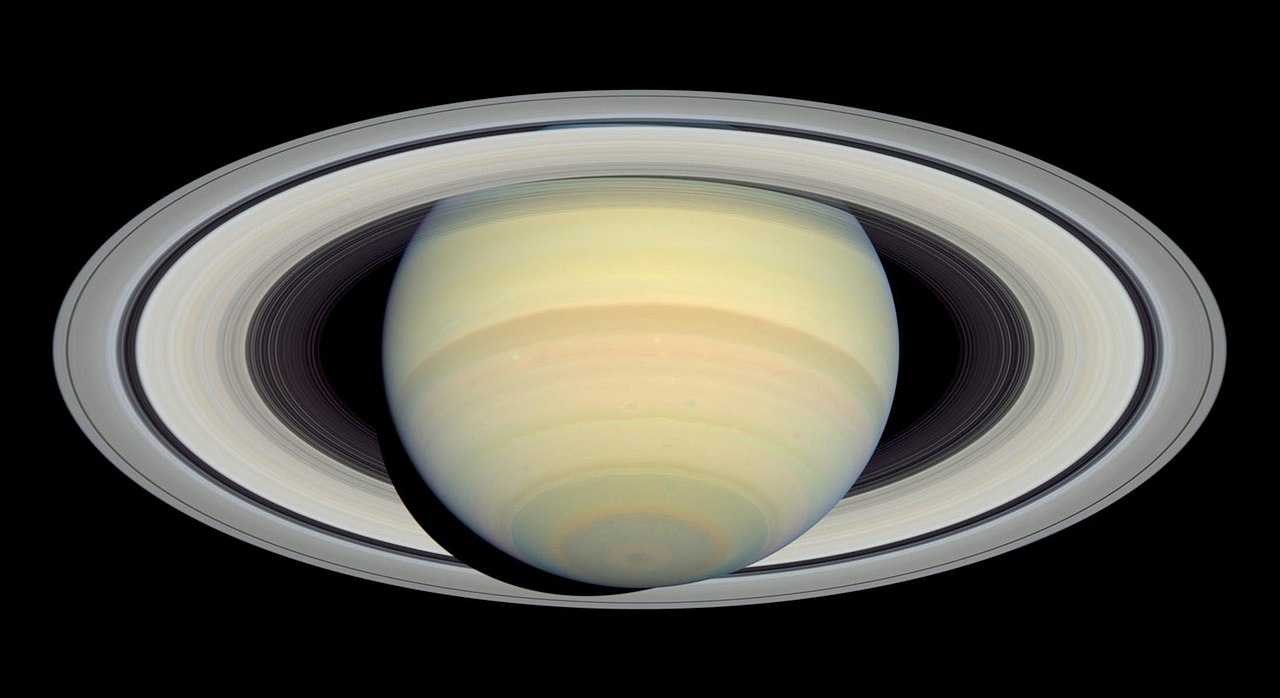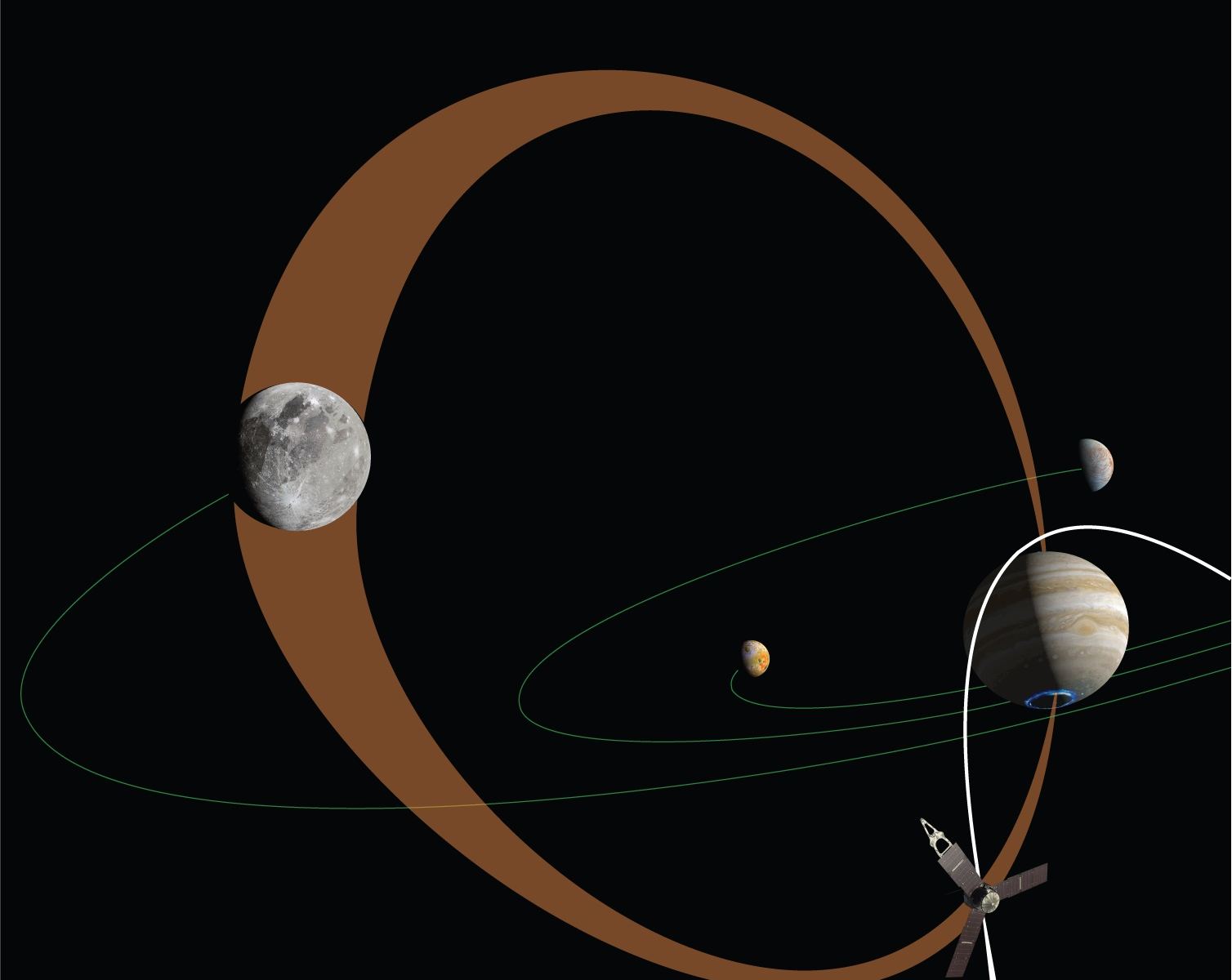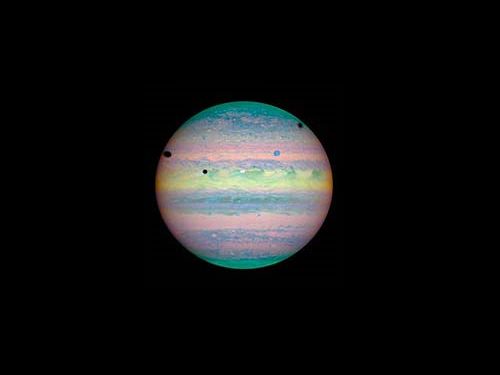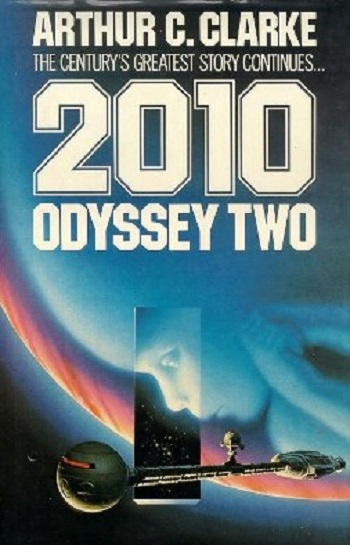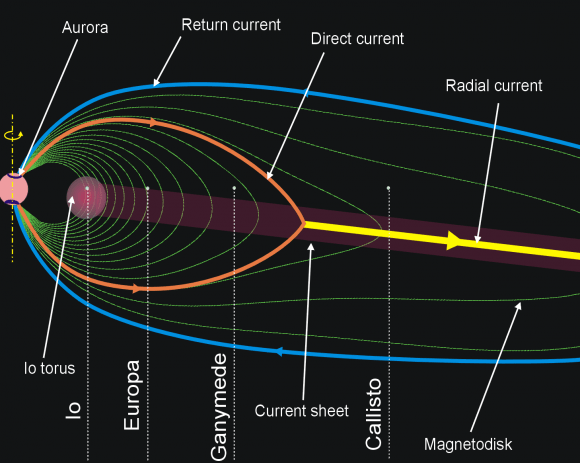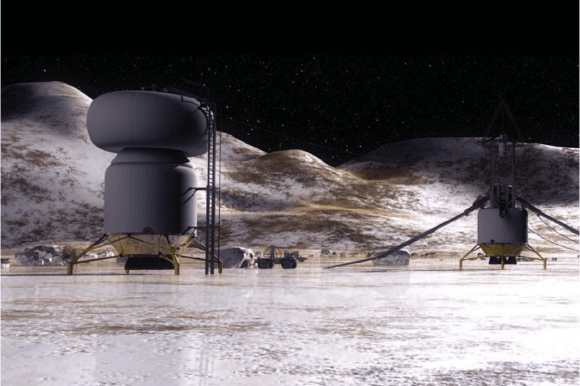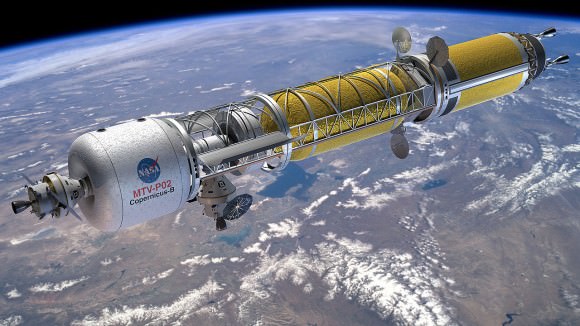This next week will mark a scientifically valuable achievement for NASA’s Juno mission, as the pioneering spacecraft is slated to fly within 358 kilometers (222 miles) of Jupiter’s icy moon Europa on September 29 at 5:36 a.m. EDT (2:36 a.m. PDT) as part of its extended mission to explore the Jupiter system. A flyby this close to Europa’s surface will allow Juno to acquire some of the highest-resolution images ever taken of the icy moon. For context, the last mission to explore Europa in depth was NASA’s Galileo spacecraft, which got within 351 kilometers (218 miles) of the surface on January 3, 2000.
Continue reading “NASA’s Juno To Skim the Surface of Jupiter’s Icy Moon Europa”Will Europa finally answer, ‘Are we alone?’
While NASA’s much-lauded Space Launch System stands ready for its maiden flight later this month with the goal of sending astronauts back to the Moon in the next few years, our gazes once again turn to the stars as we continue to ask the question that has plagued humankind since time immemorial: Are we alone? While there are several solar system locales that we can choose from to conduct our search for life beyond Earth, to include Mars and Saturn’s moons, Titan and Enceladus, one planetary body orbiting the largest planet in the solar system has peaked the interest of scientists since the 1970s.
Continue reading “Will Europa finally answer, ‘Are we alone?’”Jupiter's Giant Moons Prevent it From Having Rings Like Saturn
When the name Saturn is uttered, what comes to mind? For most people, the answer would probably be, “its fabulous system of rings.” There’s no doubt they are iconic, but what is perhaps lesser-known is that Jupiter, Uranus, and Neptune all have ring systems of their own. However, whereas Saturn’s rings are composed mainly of ice particles (making them highly reflective), Jupiter’s rings are composed mainly of dust grains. Meanwhile, Uranus and Neptune have rings of extremely dark particles known as tholins that are very hard to see. For this reason, none of the other gas giants get much recognition for their rings.
However, the question of why Jupiter doesn’t have larger, more spectacular rings than Saturn has been bothering astronomers for quite some time. As the larger and more massive of the two bodies, Jupiter should have rings that would dwarf Saturn’s by comparison. This mystery may have finally been resolved thanks to new research by a team from UC Riverside. According to their study, Jupiter’s massive moons (aka. Jupiter’s Galilean Moons) prevented it from developing a big, bright, beautiful ring system that would put Saturn’s to shame.
Continue reading “Jupiter's Giant Moons Prevent it From Having Rings Like Saturn”ESA's Juice Mission is Fully Integrated and Ready for Testing. Soon it'll fly to Space on a Mission to Jupiter's Moons
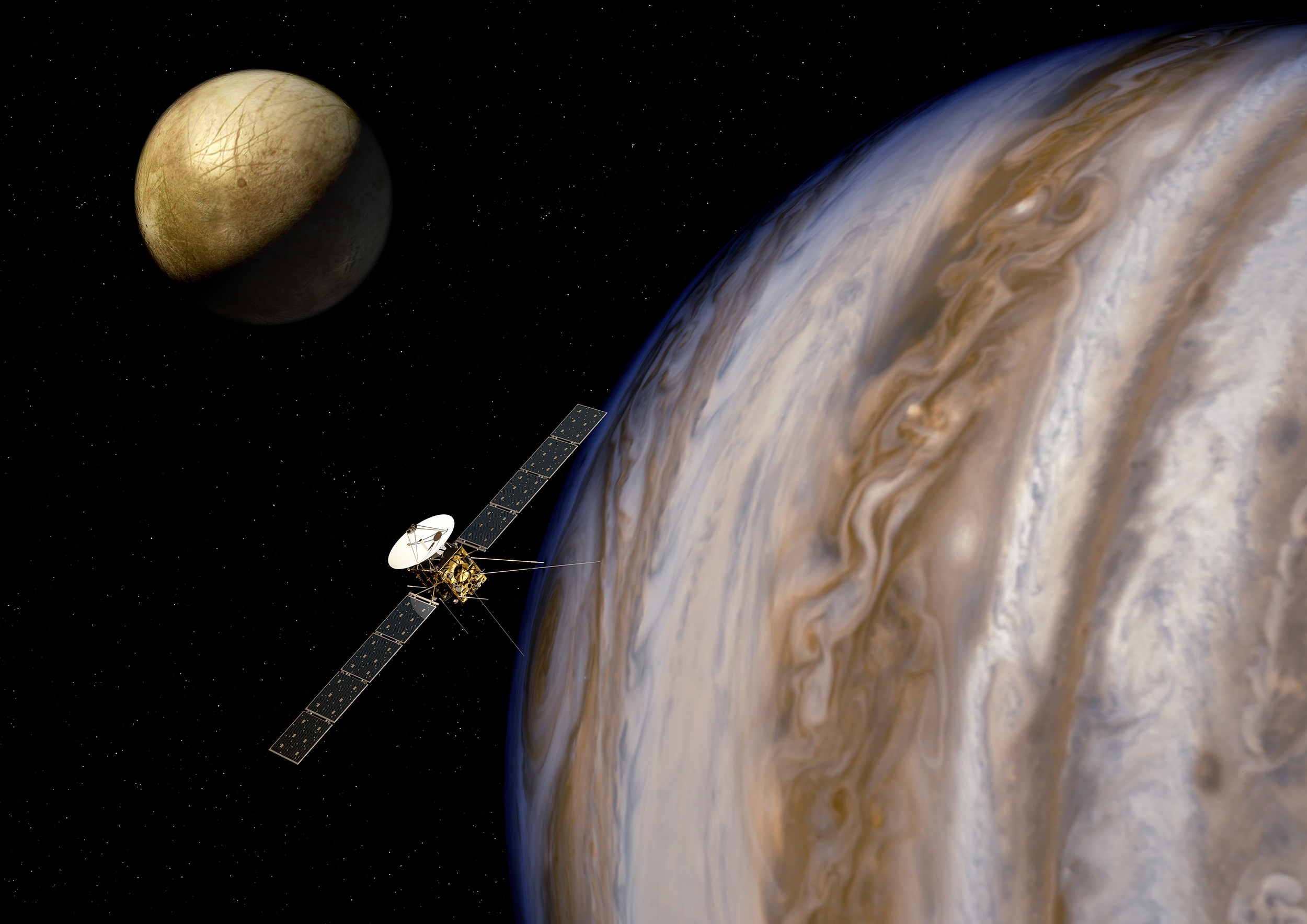
Now less than one year until the projected launch date, ESA’s JUICE mission is in the final phases of development. The JUpiter ICy moons Explorer (JUICE) is now fully built with all ten instruments integrated into the spacecraft bus. Next comes all-up testing in a full flight configuration.
Launch is currently scheduled for April of 2023, with the mission slated to conduct detailed investigations of Jupiter and its system of moons, focusing on Europa, Callisto and especially Ganymede.
Continue reading “ESA's Juice Mission is Fully Integrated and Ready for Testing. Soon it'll fly to Space on a Mission to Jupiter's Moons”Jupiter and Ganymede are Connected by Magnetic Fields
On July 5th, 2016, NASA’s Juno spacecraft arrived at Jupiter and began its four-year mission (which has since been extended to 2025) to study the gas giant’s atmosphere, composition, magnetosphere, and gravitational environment. Juno is the first dedicated mission to study Jupiter since the Galileo probe studied the system between 1995 and 2003. The images and data it has sent back to Earth have revealed much about Jupiter’s atmosphere, aurorae, polar storms, internal structure, and moons.
In addition, the Juno mission has allowed astronomers to learn more about how magnetic interaction between some of Jupiter’s moons and its atmosphere leads the gas giant to experience aurorae around its northern and southern poles. After analyzing data from Juno’s payload, a team of researchers from the Southwest Research Institute (SwRI) observed how streams of electrons from Ganymede (Jupiter’s largest moon) leave an “auroral footprint” in Jupiter’s atmosphere.
Continue reading “Jupiter and Ganymede are Connected by Magnetic Fields”Following the Jovian Moons Through 2021 Mutual Eclipse Season
Watch as the Jovian moons perform a spectacular celestial dance in 2021.
Wondering where all the planets have gone? With the the exception of Mars high in the dusk sky, all of the other naked eye planets (Mercury, Venus, Jupiter and Saturn) are currently hiding low in the dawn… but that’s about to change.
Continue reading “Following the Jovian Moons Through 2021 Mutual Eclipse Season”NASA Releases a New Poster for the Europa Clipper Mission
In this decade and the next, some very impressive missions will take place. For instance, NASA will send its robotic Europa Clipper orbiter investigate Jupiter’s icy moon Europa for the first time. The orbiter will launch sometime in the middle of the decade (likely 2024) and arrive in the Jovian sytem in the 2030s to look for possible signs of life.
In preparation for this momentous event, NASA recently released a stunning new mission poster. As you can see, the poster features the orbiter looking down on Europa’s icy surface with Jupiter hanging in the background. The orbiter itself is in shadow so as to draw attention to the landscape beneath it.
Continue reading “NASA Releases a New Poster for the Europa Clipper Mission”Jupiter Probably Has 600 Small, Irregular Moons
The better our technologies get, the better we get at finding objects in space. That’s certainly true of Jupiter and its moons. Prior to Galileo, nobody knew the other planets had moons. Then in 1609/10, as he made improvements to his telescope, he aimed it at the gas giant and eventually found four moons: Io, Europa, Ganymede, and Callisto. Now those four natural satellites also bear his name: the Galilean moons.
Over the centuries since then, and especially in our digital age, astronomical tools and methods kept improving. In particular, wide-field CCD (Charge Coupled Devices) have led to an explosion of astronomical discoveries. In recent years, the confirmed number of Jovian moons has risen to 79. Now, a new study says that there may be 600 small irregular moons orbiting Jupiter.
Continue reading “Jupiter Probably Has 600 Small, Irregular Moons”How Do We Settle on Jupiter’s Moons?
Welcome back to our series on Settling the Solar System! Today, we take a look at the largest of the Jovian Moons – Io, Europa, Ganymede and Callisto!
In 1610, Galileo Galilei became the first astronomer to discover the large moons of Jupiter, using a telescope of his own design. As time passed, these moons – Io, Europa, Ganymede, and Callisto – would collectively come to be referred to as the Galilean Moons, in honor of their discoverer. And with the birth of space exploration, what we’ve come to know about these satellites has fascinated and inspired us.
For example, ever since the Pioneer and Voyager probes passed through the system decades ago, scientists have suspected that moons like Europa might be our best bet for finding life in our Solar System beyond Earth. And because of the presence of water ice, interior oceans, minerals, and organic molecules, it has been speculated that humanity might establish colonies on one or more of these worlds someday.
Examples in Fiction:
The concept of a colonized Jovian system is featured in many science fiction publications. For instance, Robert A. Heinlein’s novel Farmer in the Sky (1953) centers on a teenage boy and his family moving to Ganymede. The moon is in the process of being terraformed in the story, and farmers are being recruited to help turn it into an agricultural colony.
In the course of the story, it is mentioned that there are also efforts to introduce an atmosphere on Callisto. Many of his Heinlein’s other novels include passing mentions of a colony on Ganymede, including The Rolling Stones (1952), Double Star (1956), I Will Fear No Evil (1970), and the posthumously-written Variable Star (2006).
In 1954, Poul Anderson published a novella titled The Snows of Ganymede (1954). In this story, a party of terraformers visits a settlement on Ganymede called X, which was established two centuries earlier by a group of American religious fanatics.
In Arthur C. Clarke’s Space Odyssey series, the moon of Europa plays a central role. In 2010: Odyssey Two (1982) an ancient race of advanced aliens are turning the moon into a habitable body by converting Jupiter into a second sun. The warmth of this dwarf star (Lucifer) causes the surface ice on Europa to melt, and the life forms that are evolving underneath are able to emerge.
In 2061: Odyssey Three, Clarke also mentions how Lucifer’s warmth has caused Ganymede’s surface to partially sublimate, creating a large equatorial lake. Isaac Asimov also used the moons of Jupiter in his stories. In the short stories “Not Final!” (1941) and “Victory ‘Unintentional'” (1942), a conflict arises between humans living on Ganymede and the inhabitants of Jupiter.
In Philip K. Dick’s short-story The Mold of Yancy (1955), Callisto is home to a colony where the people conform to the dictates of Yancy, a public commentator who speaks to them via public broadcasts. In Bruce Sterling’s Schismatrix (1985), Europa is inhabited by a faction of genetically-engineered posthumans that are vying for control of the Solar System.
Alastair Reynolds’s short story “A Spy in Europa” depicts colonies built on the underside of Europa’s icy surface. Meanwhile, a race of genetically-altered humans (called the “Denizens”) are created to live in the subsurface ocean, close to the core-mantle boundary where hydrothermal vents keep the water warm and the native life forms live.
Kim Stanley Robinson’s novels Galileo’s Dream (2009) and 2312 (2012) feature colonies on Io, where settlements are adapted to deal with the volcanically active, hostile surface. The former novel is partly set on Callisto, where a massive city called Valhalla is built around the concentric rings of the moon’s giant crater (also mentioned in 2312).
In Robinson’s The Memory of Whiteness (1985), the protagonists visit Europa, which hosts large human colonies who live around pools of melted ice. And in his novel Blue Mars (1996), Robinson makes a passing description of a flourishing colony on Callisto.
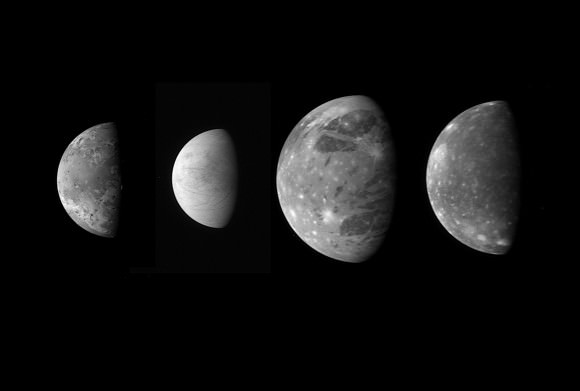
Proposed Methods:
Since the Voyager probes passed through the Jovian system, several proposals have been made for crewed missions to Jupiter’s moons and even the creation of settlements. For instance, in 1994, the private spaceflight venture known as the Artemis Project was established with the intent of colonizing the Moon in the 21st century.
However, in 1997, they also drafted plans to colonize Europa, which called for igloos to be established on the surface. These would serve as based for scientists who then drill down into the Europan ice crust and explore the sub-surface ocean. This plan also discussed the possible use of “air pockets” in the ice sheet for long-term human habitation.
In 2003, NASA produced a study called Revolutionary Concepts for Human Outer Planet Exploration (HOPE) which addressed future exploration of the Solar System. Because of its distance from Jupiter, and therefore low exposure to radiation, the target destination in this study was the moon Callisto.
The plan called for operations to begin in 2045. These would begin with the creation of a base on Callisto, where science teams would be able to teleoperate a robotic submarine that would be used to explore Europa’s internal ocean. These science teams would also excavate surface samples near their landing site on Callisto.
Last, but not least, the expedition to Callisto would establish a reusable surface habitat where water ice could be harvested and converted into rocket fuel. This base could therefore serve as a resupply base for all future exploitation missions in the Jovian system.
Also in 2003, NASA reported that a manned mission to Callisto might be possible in the 2040s. According to a joint-study released by the Glenn Research Center and the Ohio Aerospace Institute, this mission would rely on a ship equipped with Nuclear-Electric Propulsion (NEP) and artificial gravity, which would transport a crew on a 5-year mission to Callisto to establish a base.
In his book Entering Space: Creating a Spacefaring Civilization (1999), Robert Zubrin advocated mining the atmospheres of the outer planets – including Jupiter – to obtain Helium-3 fuel. A base on one or more of the Galilean moons would be necessary for this. NASA has also speculated on this, citing how it could yield limitless supplies of fuel for fusion reactors here on Earth and anywhere else in the Solar System where colonies exist.
In the 2000s, the Lifeboat Foundation – a non-profit organization dedicated to the preservation of humanity – was established. In 2012, they released a study titled “Colonizing Jupiter’s Moons: An Assessment of Our Options and Alternatives“, which considered the colonization of the Galilean moons as a potential alternative to colonies on the Moon or Mars.
In October of 2012, Elon Musk unveiled his concept for an Mars Colonial Transporter (MCT), which was central to his long-term goal of colonizing Mars. At the time, Musk stated that the first unmanned flight of the Mars transport spacecraft would take place in 2022, followed by the first manned MCT mission departing in 2024.
In September 2016, during the 2016 International Astronautical Congress, Musk revealed further details of his plan, which included the design for an Interplanetary Transport System (ITS) and estimated costs. This system, which was originally intended to transport settlers to Mars, had evolved in its role to transport human beings to more distant locations in the Solar System – including Europa and other Jovian moons.
Potential Benefits:
Establishing colonies on the Galilean moons has many potential benefits for humanity. For one, the Jovian system is incredibly rich in terms of volatiles – which include water, carbon dioxide, and ammonia ices – as well as organic molecules. In addition, it is believed that Jupiter’s moons also contain massive amounts of liquid water.
For example, volume estimates placed on Europa’s interior ocean suggest that it may contain as much as 3 × 1018 m3 – three quadrillion cubic kilometers, or 719.7 trillion cubic miles – of water. This is slightly more than twice the combined volume of all of Earth’s oceans. In addition, colonies on the moons of Jupiter could enable missions to Jupiter itself, where hydrogen and helium-3 could be harvested as nuclear fuel.
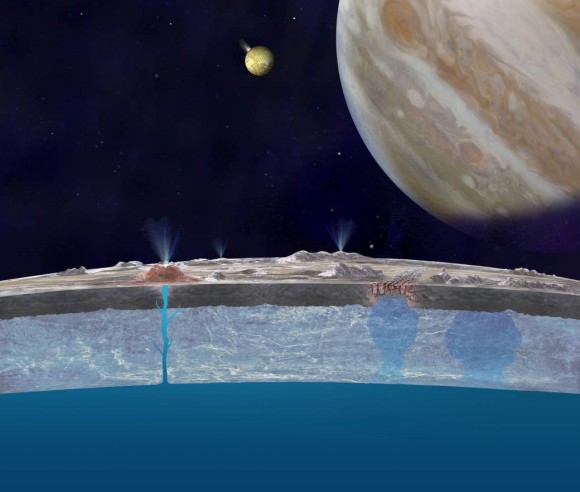
Colonies established on Europa and Ganymede would also allow for multiple exploration missions to be mounted to the interior oceans that these moons are believed to have. Given that these oceans are also thought to be some of the most likely locations for extra-terrestrial life in our Solar System, the ability to examine them up close would be a boon for scientific research.
Colonies on the moons of Io, Europa, Ganymede, and Callisto would also facilitate missions farther out into the Solar System. These colonies could serve as stopover points and resupply bases for missions heading to and from the Cronian system (Saturn’s system of moons) where additional resources could be harvested.
In short, colonies in the Jovian system would provide humanity with access to abundant resources and immense research opportunities. The chance to grow as a species, and become a post-scarcity one at that, are there; assuming that all the challenges can be overcome.
Challenges:
And of course, these challenges are great in size and many in number. They include, but are not limited to, radiation, the long-term effects of lower gravity, transportation issues, lack of infrastructure, and of course, the sheer cost involved. Considering the hazard radiation poses to exploration, it is appropriate to deal with this aspect first.
Io and Europa, being the closest Galileans to Jupiter, receive the most radiation of any of these moons. This is made worse by the fact that neither have a protective magnetic field and very tenuous atmospheres. As such, Io’s surface receives an average of about 3,600 rems per day, while Europa receives about 540 per day.
For comparison, people here on Earth are exposed to less than 1 rem a day (0.62 for those living in developed nations). Exposure to 500 rems a day is likely to be fatal, and exposure to roughly 75 in a period of a few days is enough to cause severe health problems and radiation poisoning.
Ganymede is the only Galilean moon (and only non-gas giant body other than Earth) to have a magnetosphere. However, it is still overpowered by Jupiter’s powerful magnetic field. On average, the moon receives about 8 rads of radiation per day, which is the equivalent of what the surface of Mars is exposed to in an average year.
Only Callisto is far enough from Jupiter that it is not dominated by its magnetic environment. Here, radiation levels only reach about 0.01 rems per day, just a fraction of what we are exposed to here on Earth. However, its distance from Jupiter means that it experiences its fair share of problems as well (not the least of which is a lack of tidal heating in its interior).
Another major issue is the long-term effects the lower gravity on these moons would have on human health. On the Galilean moons, the surface gravity ranges from 0.126 g (for Callisto ) to 0.183 g (for Io). This is comparable to the Moon (0.1654 g), but substantially less than Mars (0.376 g). And while the effects of low-g are not well-understood, it is known that the long-term effect of microgravity include loss of bone density and muscle degeneration.
Compared to other potential locations for colonization, the Jovian system is also very far from Earth. As such, transporting crews and all the heavy equipment necessary to build a colony would be very time-consuming, as would missions where resources were being transported to and from the Jovian moons.
To give you a sense of how long it would take, let’s consider some actual missions to Jupiter. The first spacecraft to travel from Earth to Jupiter was NASA’s Pioneer 10 probe, which launched on March 3rd, 1972, and reached the Jupiter system on December 3, 1973 – 640 days (1.75 or years) of flight time.
Pioneer 11 made the trip in 606 days, but like its predecessor, it was simply passing through the system on its way to the Outer planets. Similarly, the Voyager 1 and 2 probes, which were also passing through the system, took 546 days and 688 days, respectively. For direct missions, like the Galileo probe and the recent Juno mission, the travel time was even longer.
In the case of Galileo, the probe left Earth on October 18th, 1989, and arrived at Jupiter on December 7th, 1995. In other words, it took 6 years, 1 month, and 19 days to make it to Jupiter from Earth without flying by. Juno, on the other hand, launched from Earth on Aug. 5th, 2011, and achieved orbit around Jupiter on July 5th, 2016 – 1796 days, or just under 5 years.
And, it should be noted, these were uncrewed missions, which involved only a robotic probe and not a vessel large enough to accommodate large crews, supplies and heavy equipment. As a result, colony ships would have to be much larger and heavier, and would require advanced propulsion systems – like nuclear-thermal/nuclear-electric engines – to ensure they made the trip in a reasonable amount of time.
Missions to and from the Jovian moons would also require bases between Earth and Jupiter in order to provide refueling and resupplying, and cut down on the costs of individual missions. This would mean that permanent outposts would need to be established on the Moon, Mars, and most likely in the Asteroid Belt before any missions to Jupiter’s moons were considered feasible or cost-effective.
These last two challenges raise the issue of cost. Between building ships that have the ability to make the trip to Jupiter in a fair amount of time, established the bases needed to support them, and the cost of establishing the colonies themselves, the colonization of the Jovian moons would be incredibly expensive! Combined with the hazards of doing so, one has to wonder if its even worth it.
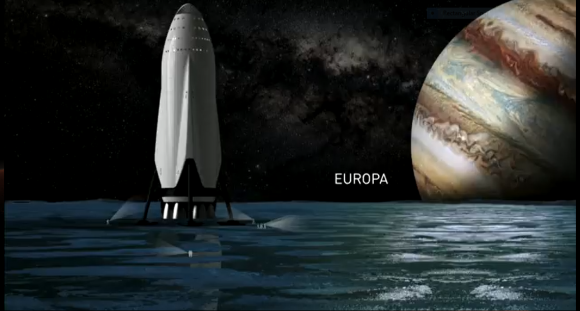
On the other hand, in the context of space exploration and colonization, the idea of establishing permanent human outposts on Jupiter’s moons makes sense. All of the challenges can be addressed, provided the proper precautions are taken and the right kind of resources are committed. And while it will have to wait until after similar colonies/bases are established on the Moon and Mars, it is not a bad idea as far as “next steps” go.
With colonies on any of the Galilean moons, humanity will have a foothold in the outer Solar System, a stopover point for future missions to Saturn and beyond, and access to abundant resources. Again, it all comes down to how much we are willing to spend.
We have written many interesting articles on colonization here at Universe Today. Here’s Why Colonize the Moon First?, How Do We Colonize Mercury?, How Do We Colonize Venus?, Colonizing Venus with Floating Cities, Will We Ever Colonize Mars?, and The Definitive Guide to Terraforming.
Astronomy Cast also has some interesting episodes on the subject. Check out Episode 95: Humans to Mars, Part 2 – Colonists, Episode 115: The Moon, Part 3 – Return to the Moon, Episode 381: Hollowing Asteroids in Science Fiction.
Sources:
How Many Moons are in the Solar System?
For millennia, human beings stared up at the night sky and were held in awe by the Moon. To many ancient cultures, it represented a deity, and its cycles were accorded divine significance. By the time of Classical Antiquity and the Middle Ages, the Moon was considered to be a heavenly body that orbited Earth, much like the other known planets of the day (Mercury, Venus, Mars, Jupiter, and Saturn).
However, our understanding of moons was revolutionized when in 1610, astronomer Galileo Galilei pointed his telescope to Jupiter and noticed ” four wandering stars” around Jupiter. From this point onward, astronomers have come to understand that planets other than Earth can have their own moons – in some cases, several dozen or more. So just how many moons are there in the Solar System?
In truth, answering that question requires a bit of clarification first. If we are talking about confirmed moons that orbit any of the planets of the Solar System (i.e. those that are consistent with the definition adopted by the IAU in 2006), then we can say that there are currently 207 known moons. If however, we open the floor to “dwarf planets” that have confirmed satellites, the number reached 220.
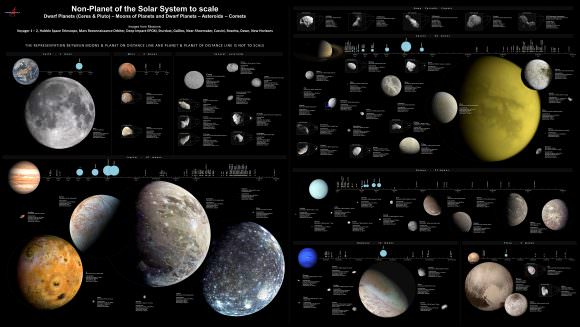
However, 479 minor-planet moons have also been observed in the Solar System (as of Dec. 2022). This includes the 229 known objects in the asteroid belt with satellites, six Jupiter Trojans, 91 near-Earth objects (two with two satellites each), 31 Mars-crossers, and 84 natural satellites of Trans-Neptunian Objects. And some 150 additional small bodies have been observed within the rings of Saturn. If we include all these, then we can say that the Solar System has 849 known satellites.
Inner Solar System:
The planets of the Inner Solar system – Mercury, Venus, Earth, and Mars – are all terrestrial planets, which means that they are composed of silicate rock and minerals that are differentiated between a metallic core and a silicate mantle and crust. For a number of reasons, few satellites exist within this region of the Solar System.
All told, only three natural satellites exist orbiting planetary bodies in the Inner Solar System – Earth and Mars. While scientists theorize that there were moons around Mercury and Venus in the past, it is believed that these moons impacted the surface a long time ago. The reason for this sparseness of satellites has a lot to do with the gravitational influence of the Sun.
Both Mercury and Venus are too close to the Sun to have grabbed onto a passing object or held onto rings of debris in orbit that could have coalesced to form a satellite over time. In Mercury’s case, it is also too weak in terms of its own gravitational pull to grab a satellite in its orbit. Earth and Mars were able to retain satellites, but mainly because they are the outermost of the Inner planets.
Earth has only one natural satellite, which we are familiar with – the Moon. With a mean radius of 1737 km (1,080 mi) and a mass of 7.3477 x 10²² kg, the Moon is 0.273 times the size of Earth and 0.0123 as massive, which is quite large for a satellite. It is also the second densest moon in our Solar System (after Io), with a mean density of 3.3464 g/cm³.
Several theories have been proposed for the formation of the Moon. The prevailing hypothesis today is that the Earth-Moon system formed as a result of an impact between the newly-formed proto-Earth and a Mars-sized object (named Theia) roughly 4.5 billion years ago. This impact would have blasted material from both objects into orbit, where it eventually accreted to form the Moon.
Mars, meanwhile, has two moons – Phobos and Deimos. Like our own Moon, both of the Martian moons are tidally locked to Mars, so they always present the same face to the planet. Compared to our Moon, they are rough and asteroid-like in appearance and also much smaller. Hence the prevailing theory is that they were once asteroids that were kicked out of the Main Belt by Jupiter’s gravity and were then acquired by Mars.
The larger moon is Phobos, whose name comes from the Greek word which means “fear” (i.e. phobia). Phobos measures just 22.7 km (14 mi) across and has an orbit that places it closer to Mars than Deimos. Compared to Earth’s own Moon — which orbits at a distance of 384,403 km (238,857 mi) away from our planet — Phobos orbits at an average distance of only 9,377 km (5,826.5 mi) above Mars.

Mars’ second moon is Deimos, which takes its name from the Greek word for panic. It is even smaller, measuring just 12.6 km (7.83 mi) across, and is also less irregular in shape. Its orbit places it much farther away from Mars, at a distance of 23,460 km (14,577 mi), which means that Deimos takes 30.35 hours to complete an orbit around Mars.
These three moons are the sum total of moons to be found within the Inner Solar System (at least, by the conventional definition). But looking further abroad, we see that this is really just the tip of the iceberg. To think we once believed that the Moon was the only one of its kind!
Outer Solar System:
Beyond the Asteroid Belt (and Frost Line), things become quite different. In this region of the Solar System, every planet has a substantial system of Moons; in the case of Jupiter and Saturn, reaching perhaps even into the hundreds. So far, a total of 213 moons have been confirmed orbiting the Outer Planets, while several hundred more orbit minor bodies and asteroids.
Due to its immense size, mass, and gravitational pull, Jupiter has the most satellites of any planet in the Solar System. At present, the Jovian system includes 80 known moons, though it is estimated that it may have over 200 moons and moonlets (the majority of which are yet to be confirmed and classified).
The four largest Jovian moons are known as the Galilean Moons (named after their discoverer, Galileo Galilei). They include Io, the most volcanically active body in our Solar System; Europa, which is suspected of having a massive subsurface ocean; Ganymede, the largest moon in our Solar System; and Callisto, which is also thought to have a subsurface ocean and features some of the oldest surface material in the Solar System.

Then there’s the Inner Group (or Amalthea group), which is made up of four small moons that have diameters of less than 200 km (124 mi), orbit at radii less than 200,000 km (124,275 mi), and have orbital inclinations of less than half a degree. This group includes the moons of Metis, Adrastea, Amalthea, and Thebe. Along with a number of as-yet-unseen inner moonlets, these moons replenish and maintain Jupiter’s faint ring system.
Jupiter also has an array of Irregular Satellites, which are substantially smaller and have more distant and eccentric orbits than the others. These moons are broken down into families that have similarities in orbit and composition and are believed to be largely the result of collisions from large objects that were captured by Jupiter’s gravity.
Similar to Jupiter, it is estimated that Saturn has at least 150 moons and moonlets, but only 83 of these moons have been given official names or designations. Of these, 57 are less than 10 km (6.2 mi) in diameter, and another 13 are between 10 and 50 km (6.2 to 31 mi) in diameter. However, some of its inner and outer moons are rather large, ranging from 250 to over 5000 km (155 to 3100 mi)
Traditionally, most of Saturn’s moons have been named after the Titans of Greek mythology and are grouped based on their size, orbits, and proximity to Saturn. The innermost moons and regular moons all have small orbital inclinations and eccentricities and prograde orbits. Meanwhile, the irregular moons in the outermost regions have orbital radii of millions of kilometers, orbital periods lasting several years, and move in retrograde orbits.
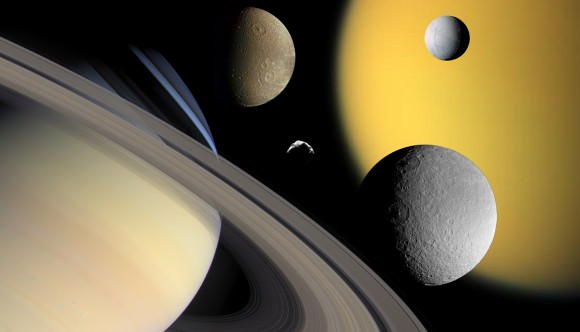
The Inner Large Moons, which orbit within the E Ring, include the larger satellites Mimas Enceladus, Tethys, and Dione. These moons are all composed primarily of water ice and are believed to be differentiated into a rocky core and an icy mantle and crust. The Large Outer Moons, which orbit outside of Saturn’s E Ring, are similar in composition to the Inner Moons – i.e. composed primarily of water ice, and rock.
At 5,150 km (3,200 mi) in diameter and 1,350×1020 kg in mass, Titan is Saturn’s largest moon and comprises more than 96% of the mass in orbit around the planet. Titan is also the only large moon to have its own atmosphere, which is cold, dense, and composed primarily of nitrogen with a small fraction of methane. Scientists have also noted the presence of polycyclic aromatic hydrocarbons in the upper atmosphere, as well as methane ice crystals.
The surface of Titan, which is difficult to observe due to persistent atmospheric haze, shows only a few impact craters, evidence of cryo-volcanoes, and longitudinal dune fields that were apparently shaped by tidal winds. Titan is also the only body in the Solar System aside from Earth to have bodies of liquid on its surface. These take the form of methane–ethane lakes in Titan’s north and south polar regions.
Uranus has 27 known satellites, which are divided into the categories of larger moons, inner moons, and irregular moons (similar to other gas giants). The largest moons of Uranus are, in order of size, Miranda, Ariel, Umbriel, Oberon, and Titania. These moons range in diameter and mass from 472 km (293 mi) and 6.7×1019 kg for Miranda to 1578 km (980.5 mi) and 3.5×1021 kg for Titania. Each of these moons is particularly dark, with low bond and geometric albedos. Ariel is the brightest, while Umbriel is the darkest.
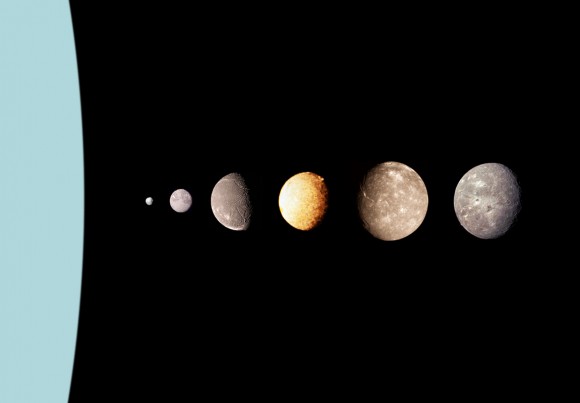
All of the large moons of Uranus are believed to have formed in the accretion disc, which existed around Uranus for some time after its formation or resulted from the large impact suffered by Uranus early in its history. Each one is comprised of roughly equal amounts of rock and ice, except for Miranda, which is made primarily of ice.
The ice component may include ammonia and carbon dioxide, while the rocky material is believed to be composed of carbonaceous material, including organic compounds (similar to asteroids and comets). Their compositions are believed to be differentiated, with an icy mantle surrounding a rocky core.
Neptune has 14 known satellites, all but one of which are named after Greek and Roman deities of the sea (except for S/2004 N 1, which is currently unnamed). These moons are divided into two groups – the regular and irregular moons – based on their orbit and proximity to Neptune. Neptune’s Regular Moons – Naiad, Thalassa, Despina, Galatea, Larissa, S/2004 N 1, and Proteus – are those that are closest to the planet and which follow circular, prograde orbits that lie in the planet’s equatorial plane.
Neptune’s irregular moons consist of the planet’s remaining satellites (including Triton). They generally follow inclined eccentric and often retrograde orbits far from Neptune. The only exception is Triton, which orbits close to the planet, following a circular orbit, though retrograde and inclined.
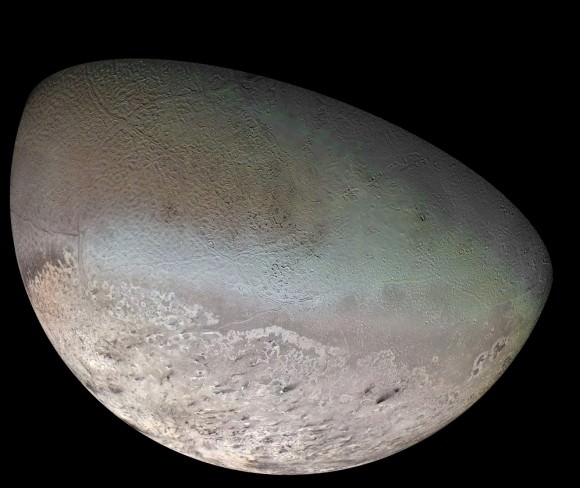
In order of their distance from the planet, the irregular moons are Triton, Nereid, Halimede, Sao, Laomedeia, Neso, and Psamathe – a group that includes both prograde and retrograde objects. With the exception of Triton and Nereid, Neptune’s irregular moons are similar to those of other giant planets and are believed to have been gravitationally captured by Neptune.
With a mean diameter of around 2,700 km (1,678 mi) and a mass of 21,4080 ± 520×1017 kg, Triton is the largest of Neptune’s moons and the only one large enough to achieve hydrostatic equilibrium (i.e. is spherical in shape). At a distance of 354,759 km (220,437 mi) from Neptune, it also sits between the planet’s inner and outer moons.
These moons make up the lion’s share of natural satellites found in the Solar System. However, thanks to ongoing exploration and improvements made in our instrumentation, satellites are being discovered in orbit around minor bodies as well.
Dwarf Planets and Other Bodies:
As already noted, there are several dwarf planets, TNOs, and other bodies in the Solar System that also have their own moons. These consist mainly of the natural satellites that have been confirmed orbiting Pluto, Eris, Haumea, and Makemake. With five orbiting satellites, Pluto has the most confirmed moons (though that may change with further observation).
The largest and closest in orbit to Pluto is Charon. This moon was first identified in 1978 by astronomer James Christy using photographic plates from the United States Naval Observatory (USNO) in Washington, D.C. Beyond Charon lies the four other circumbinary moons – Styx, Nix, Kerberos, and Hydra, respectively.
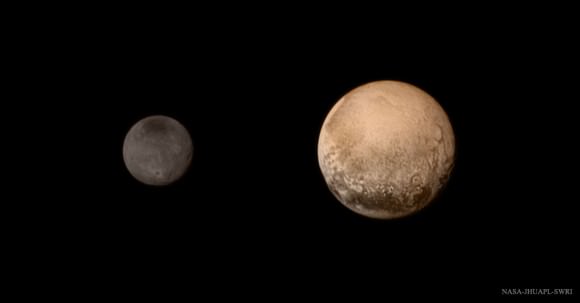
Nix and Hydra were discovered simultaneously in 2005 by the Pluto Companion Search Team using the Hubble Space Telescope. The same team discovered Kerberos in 2011. The fifth and final satellite, Styx, was discovered by the New Horizons spacecraft in 2012 while capturing images of Pluto and Charon.
Charon, Styx, and Kerberos are all massive enough to have collapsed into a spheroid shape under their own gravity. Nix and Hydra, meanwhile, are oblong in shape. The Pluto-Charon system is unusual since it is one of the few systems in the Solar System whose barycenter lies above the primary’s surface. In short, Pluto and Charon orbit each other, causing some scientists to claim that it is a “double-dwarf system” instead of a dwarf planet and an orbiting moon.
In addition, it is unusual in that each body is tidally locked to the other. Charon and Pluto always present the same face to each other, and from any position on either body, the other is always at the same position in the sky or always obscured. This also means that the rotation period of each is equal to the time it takes the entire system to rotate around its common center of gravity.
In 2007, observations by the Gemini Observatory of patches of ammonia hydrates and water crystals on the surface of Charon suggested the presence of active cryo-geysers. This would seem to indicate that Pluto has a warm subsurface ocean and that the core is geologically active. Pluto’s moons are believed to have been formed by a collision between Pluto and a similar-sized body early in the history of the Solar System. The collision released material that consolidated into the moons around Pluto.
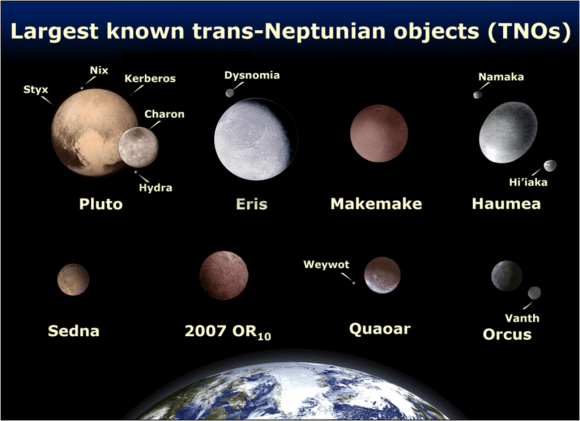
Coming in second is Haumea, which has two known moons – Hi’iaka and Namaka – which are named after the daughters of the Hawaiian goddess. Both were discovered in 2005 by Brown’s team while conducting observations of Haumea at the W.M. Keck Observatory. Hi’iaka, which was initially nicknamed “Rudolph” by the Caltech team, was discovered on January 26th, 2005.
It is the outer, the larger (at roughly 310 km (mi) in diameter), and brighter of the two, and orbits Haumea in a nearly circular path every 49 days. Infrared observations indicate that its surface is almost entirely covered by pure crystalline water ice. Because of this, Brown and his team have speculated that the moon is a fragment of Haumea that broke off during a collision.
Namaka, the smaller and innermost of the two, was discovered on June 30th, 2005, and nicknamed “Blitzen”. It is a tenth the mass of Hi‘iaka and orbits Haumea in 18 days in a highly elliptical orbit. Both moons circle Haumea is highly eccentric orbits. No estimates have been made yet as to their mass.
Eris has one moon called Dysnomia, named after the daughter of Eris in Greek mythology, and was first observed on September 10th, 2005 – a few months after the discovery of Eris. The moon was spotted by a team using the Keck telescopes in Hawaii, who were busy carrying out observations of the four brightest TNOs (Pluto, Makemake, Haumea, and Eris) at the time.
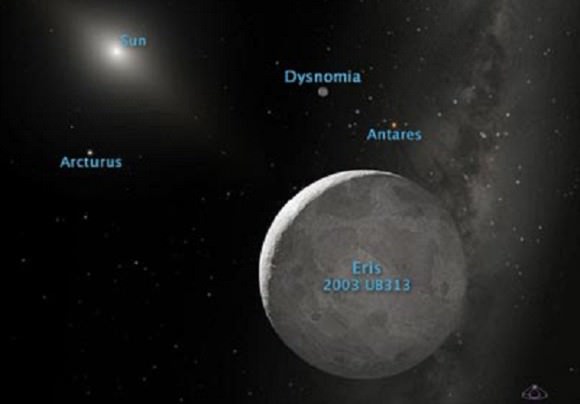
In April 2016, observations using the Hubble Space Telescope‘s Wide Field Camera 3 revealed that Makemake had a natural satellite – which was designated S/2015 (136472) 1 (nicknamed MK 2 by the discovery team). It is estimated to be 175 km (110 mi) km in diameter and has a semi-major axis at least 21,000 km (13,000 mi) from Makemake.
Largest and Smallest Moons:
The title of “largest moon in the Solar System” goes to Ganymede, which measures 5,262.4 kilometers (3,270 mi) in diameter. This not only makes it larger than Earth’s Moon but larger even than the planet Mercury – though it has only half of Mercury’s mass. As for the smallest satellite, that is a tie between S/2003 J 9 and S/2003 J 12. These two satellites, both of which orbit Jupiter, measure about 1 km (0.6 mi) in diameter.
An important thing to note when discussing the number of known moons in the Solar System is that the key word here is “known”. With every passing year, more satellites are being confirmed, and the vast majority of those we now know about were only discovered in the past few decades. As our exploration efforts continue and our instruments improve, we may find that there are hundreds more lurking around out there!
We have written many interesting articles about the moons of the Solar System here at Universe Today. Here’s What is the Biggest moon in the Solar System? What are the Planets of the Solar System?, How Many Moons Does Earth Have?, How Many Moons Does Mars Have?, How Many Moons Does Jupiter Have?, How Many Moons Does Saturn Have?, How Many Moons Does Uranus Have?, How Many Moons Does Neptune Have?
For more information, be sure to check out NASA’s Solar System Exploration page.
We have recorded a whole series of podcasts about the Solar System at Astronomy Cast. Check them out here.
Sources:

